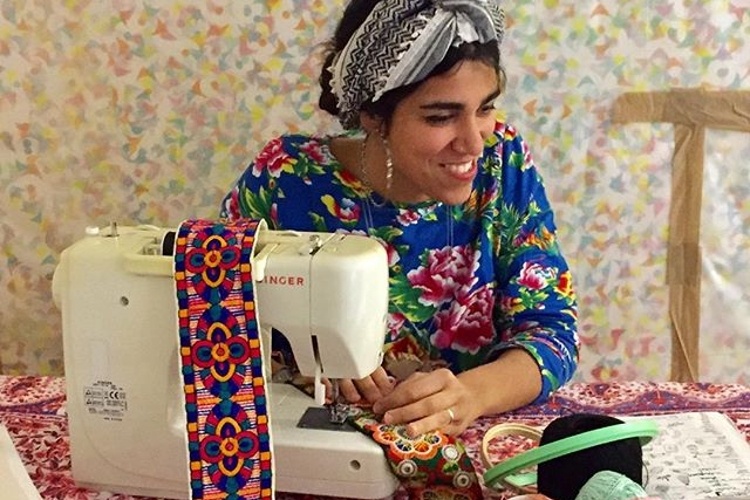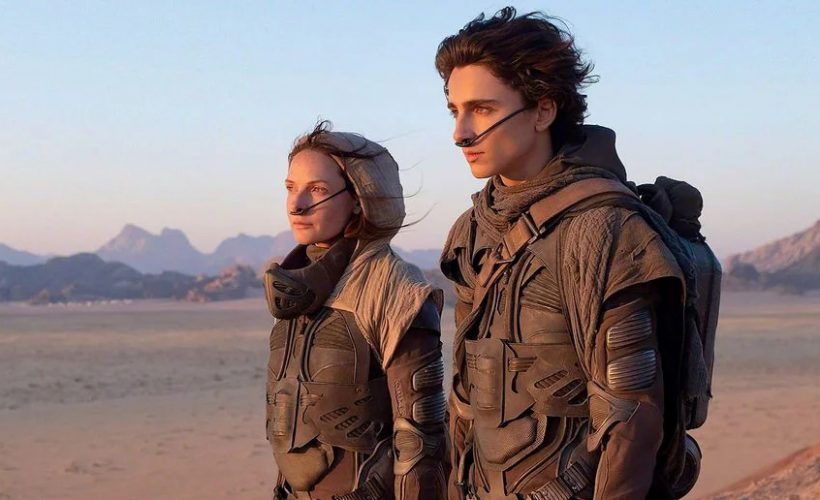Lifestyle
3.20.2019
Aya Haidar: “I Find Fascinating Seeing How the Art Scene in Middle East is Constantly Evolving”

From 20 till 23rd of March 2019, the 13th edition of Art Dubai will bring together more than 90 galleries from over 40 different countries. A gateway to artists and galleries from non-Western geographies that will be, once again, the occasion to deeper install the engagement of the Gulf region in the art scene. Last year, Aya Haidar, a british artist from lebanese descents was picked up in the show. She is currently exhibited at the Athr Gallery of Jeddah with Out of Place, a group show which presents the works of 14 artists that have participated in international residencies. She presents ‘Tolteesh’, a serie of hand embroidered hangings that looks at sexuality, social taboos, and the power of language between men and women in modern day Arab society.
Why did you catch this passion for recycled and reused objects in your practice?
The materiality of objects I use, the fact that they have already been used means they come loaded with a story in themselves before I even touch them. For me this is really important. I also spent a lot of of time working with refugees community during my travels or through the charity I used to run. Looking at how they reuse objects in such an incredibly layered way is very interesting: If you have been kicked out of your country and you are constantly moving, the bed sheet is not just a bed sheet, it becomes a bag or a dress. I found fascinating to see how resourceful diasporas are with materials and fabrics. Objects can take so many different lives.
You lastly exhibited in Art dubai and Abu Dhabi art. What do you think about the Gulf art scene today? What is special about it?
What I find fascinating is looking at the art scene across the region and Middle East and see how it is constantly evolving. My husband and I moved in Saudi Arabia from 2010 to 2012, and that was really the emergence of this burgeoning art scene in Saudi Arabia. But in Dubai, it was already exploding and it always continues to change and push boundaries. I find incredible to see how it quickly became such a hub where curators and artists from all over the world are just drawn into to every year. It injects the city and the region with a lot of energy.
You completed an art residency with Deveron Projects heading a reintegration and resettlement project fro Syrian refugee in the small community of Aberdeenshire in Scotland. Can you tell us more about it?
My residency at Deveron was an important milestone in my career. I was hired as the creative practitioner alongside an anthropologist to run this integration program with syrian refugees relocated from different refugee camps. Part of our job was to integrate them in their new community and to create a bond with local scottish people. It was a very particular situation because the oil crisis that hit the region decimated it economically and socially, particularly health related. We found patterns in eating processed and cheap foods amongst those most hard hit. In comparison, although local syrians also had low incomes, they were cooking their own food and everything was homemade. We looked at this as a starting point to bring together those two communities with marked language and religious barriers. So we turned an old shop into a donation based café This café was inclusive and welcoming to any member of the community, sometimes disadvantaged and isolated. Looking at them sitting together around the table, despite no means of verbal communication was an enlightening experience. Seeing local Scots eating hummus, falafels, manaeech and zaatar while the syrians enjoyed scottish delicacies was very funny.
See also
Zoom on Sharjah 14 edition BiennialWhat about Tooltesh that you are presenting now in Athr Gallery in Jeddah for its 10th anniversary?
Tooltesh is a serie of works that is very personal because it is about the acceptable exchanges in arabic societies between men and women. Tootlesh in arabic is when you try to get someone attention. It is a serie of things, of catcalls that men would call out to women on the street, usually harmless and playful. By example, when I was young a man told me “chou ya achta ? how are you “achta”?” from the name of the sweet and creamy fruit. I started to question those expressions that are very culturally specific and to write them down. In arabic, those words are sometimes poetic, sometimes funny or far fetched but don’t create the same reaction across the borders. Translated in english, it is almost like you switch on the light and you discover an undertone that becomes uncomfortable. For me, embroidering those words in the fabric was a way to reappropriate it in an embellished way so they become a statement and not something that a man tells you and you would feel ashamed of. It is about embracing and getting ownership of it.
What is the role of art according to you?
For me it is important for art to engage an audience and to be able to implant a seed in people’s mind. Art has a way of speaking to someone beyond language and in a way can create a huge shift in how people approach sensitive topics. I believe the value of artists is to create culture, and I think it is one of the most important job in the world but maybe I am biased.
popular

